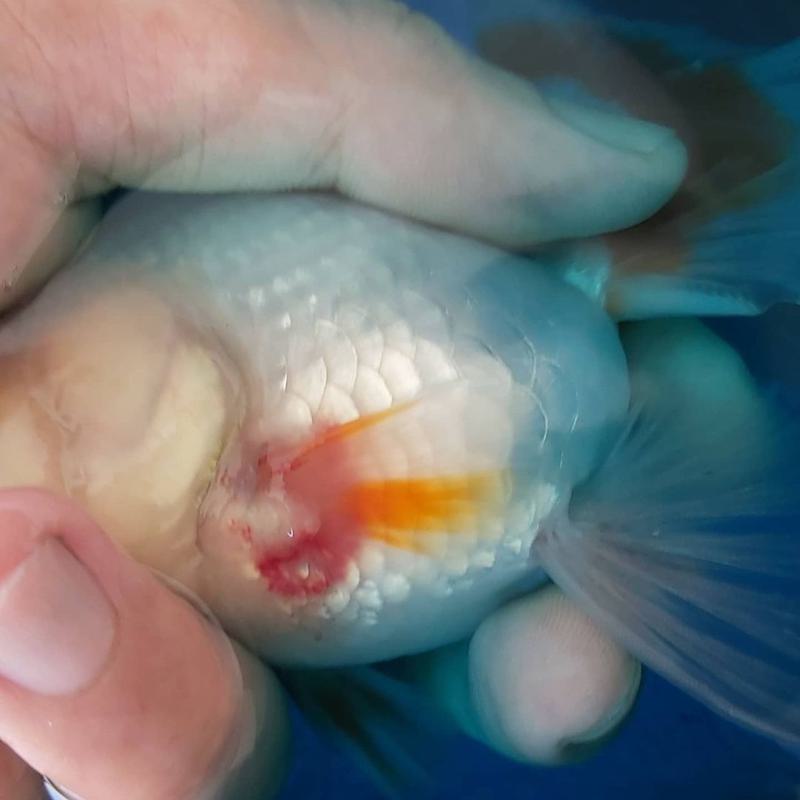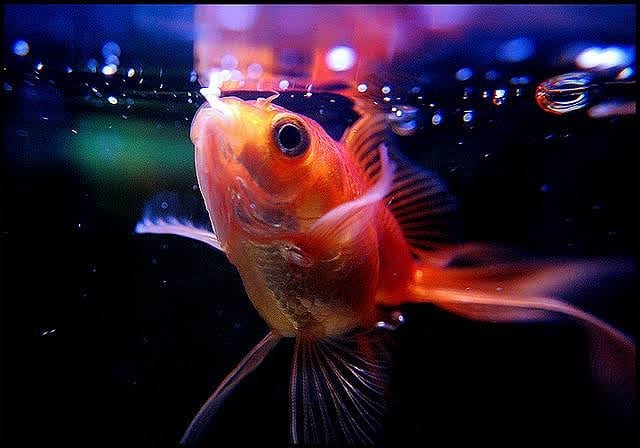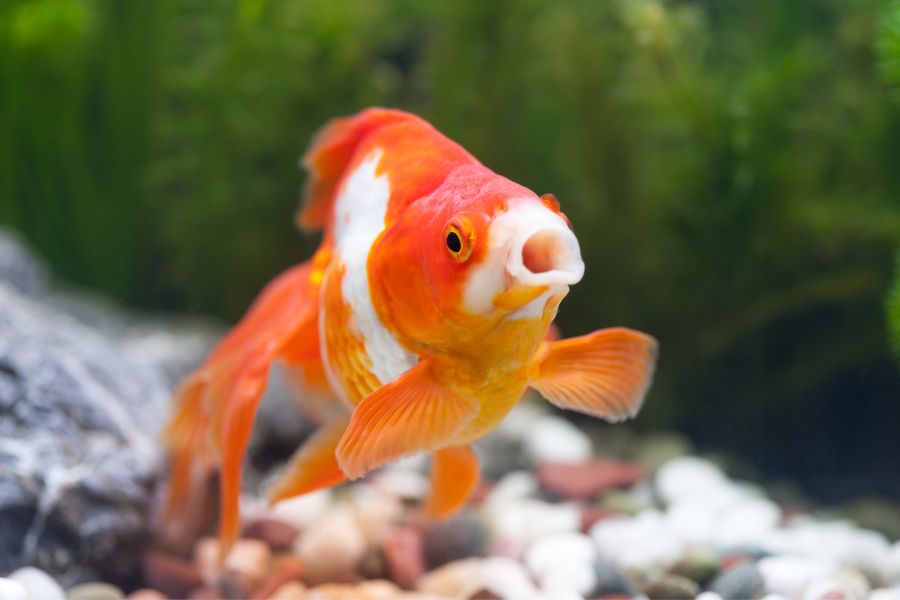Perhaps one day you came across goldfish in your aquarium behaving strangely, such as them gasping for air at the water’s surface, in which case it may be due to them suffering from ammonia poisoning.
In this article, we’ll look at the causes, symptoms, and treatment of this phenomenon so that you can prevent your fish from any further suffering.
Ammonia poisoning occurs when the pH level in your fish tank is too high, thus disturbing the nitrogen cycle and causing various symptoms in fish, such as lethargy, gasping for air, and ammonia burns.
Treatment options, such as lowering the pH and using antibiotics, should help the fish recover nicely if used early.
Before we go about tackling the problem, let’s first have a look at what ammonia poisoning is exactly so that you can detect it as early as possible.
What is Ammonia Poisoning?
Ammonia poisoning is a common phenomenon that occurs due to high ammonia levels present in the water. Ammonia poisoning is one of the most frequently seen killers of freshwater fish and, if undetected, can kill off an entire tank of fish given enough time.
Ammonia poisoning is synonymous with a high pH level, which can disturb the nitrogen cycle in the water.
Under normal circumstances, there should be no ammonia present in the water. However, the introduction of tap water or the accumulation of dead organic matter (aka detritus) can both lead to an increase in ammonia.
Symptoms of Ammonia Poisoning

Symptoms typically happen gradually over the course of several days, during which time it will cause continual damage to the fish’s internal organs and central nervous system until the fish eventually hemorrhages and dies.
Here are some of the most common symptoms you’re likely to see in your fish that are indicative of ammonia poisoning:
Gasping for Breath
Initial signs of acute ammonia poisoning include the fish needing to swim to the surface of the water to receive air. This indicates that their gills have been damaged, which you can usually see as the gills turn red and appear as if they’re bleeding.
Disinterest in Food and a Decrease in Energy
After the fish has been having difficulty breathing for a while, they may begin to behave sluggishly, sickly, and have trouble eating due to stress and pain. It may get to the point where they stop eating altogether due to their bodily functions failing in an ammonia-filled environment.
Changes in Appearance
As ammonia burns the skin and gill tissues, you’ll notice red or lilac-colored rashes appearing over the fish’s body. This will take on the appearance of blood, and will increase the need for the fish to breathe.
As the problem worsens, you may notice more red patches or streaks across the fish’s body and fins due to the ammonia burns. In this case, you’ll need to act quickly and begin performing frequent water changes.
Fish Begin Having Difficulty Swimming
As the gills become increasingly damaged, the fish will begin having a very difficult time receiving oxygen. This lack of oxygen will in turn lead the fish to become disoriented and result in them having trouble swimming.
An erratic swimming pattern and the fact that they’re swimming closer to the water’s surface are clear indicators that the ammonia in the tank is too high.
Fish are Scraping Against Things
If you notice the fish in your tank scraping against objects (including any artificial and natural items such as decorations and rocks), it may mean that they are in some kind of uncomfortable position and are trying to alleviate those feelings by rubbing against something.
Though this isn’t as indicative of ammonia poisoning as some of the other symptoms, it should nonetheless be something for you to watch out for.
Fish are Laying at the Bottom of the Tank
If you notice fish are laying at the bottom of the tank with clamped fins, that could mean that the lack of oxygen has become so severe that they no longer have the energy to move around.
In this case, it’s necessary to take immediate action as death will become imminent.
Causes of Ammonia Poisoning
Here are some of the typical ways in which ammonia can enter your tank water:
Chemically Treated Tap Water
Some water treatment companies bind a chemical called chloramine (a combination of chlorine and ammonia) to their tap water in order to act as a stabilized disinfectant for the water.
Filling your fish tank with this type of tap water can prove detrimental.
Organic Matter Accumulation
Any detritus that builds up in the water (whether it be dead plants, fish excrement, or leftover fish food) due to improper maintenance can prove to be another source of increasing ammonia levels.
Bacteria Buildup Over Time
Again, if you haven’t been keeping up with the maintenance of your tank, the accumulated detritus in your tank will eventually encourage the growth of harmful bacteria.
These bacteria can then go on to produce more ammonia as a byproduct, hence increasing the already high amounts of ammonia in the water.
Byproducts Naturally Produced by Fish
Besides the fish excrement, fish themselves also produce ammonia as a byproduct when they consume food.
As the protein in the food is used to increase body mass, this process can produce an ammonia byproduct that enters their blood and is released by their gills and into the water.
Can Goldfish Recover from Ammonia Poisoning?
With everything discussed so far, you may be pleased to hear that goldfish can indeed recover from ammonia poisoning if the issue is found and the fish are treated early. When treated, you can expect results in your fish within three to five days.
With that said, even small amounts of ammonia can damage the gills of your fish, hence its best to avoid risking this issue by using the prevention methods we’ll discuss later in the article.
How Do You Treat Ammonia Poisoning in Goldfish?

Here are some of the products you may need to treat your ammonia poisoning situation:
- Freshwater
- Standard water test kit
- Antibiotic/antibacterial medication
- Air stones
- Commercial chemicals (i.e. ammo-lock)
The procedures you’ll need to follow are as follows:
- If you notice any of the symptoms we’ve discussed earlier in your fish, you should immediately test the water using a standard water test kit, which you can typically find at your local pet store or at your veterinarian. Even if your fish aren’t displaying symptoms, you should regularly test your water to ensure no ammonia is present.
- If ammonia levels have risen above 1ppm, you will need to lower the pH of the water by performing a 25% – 50% water change (the freshwater will need to be at the same temperature as the current tank water). Frequent water changes may be required
- Add commercial chemicals (ammonia detoxifier), such as ammo-lock, to the water in order to convert the toxic ammonia to non-toxic ammonium. Although this won’t get rid of the ammonia, it will help reduce the toxicity in the meantime
- Restrict feedings so that any additional excrement and leftover food can be disposed of. If ammonia levels are very high, it may be necessary to reduce feedings for several days
- Increase the oxygenation of the water by adding air stones, which lowers the chance of the fish suffocating
- Don’t introduce new fish to the tank until you’ve made sure the ammonia and nitrite levels have dropped back to zero
- Any fish suffering from ammonia burns will need to be placed in a quarantine tank so that they may be treated with antibiotics or antibacterial medication until the ammonia problem in the main tank is sorted out
How Can You Prevent Future Ammonia Poisoning from Happening?
Because ammonia poisoning can often occur when you’re starting out with a new tank, there are some things you should keep in mind before you set out on a new aquarium.
Be sure to first start off with healthy fish when you’re setting up your tank.
Create a Good Environment for the Tank and Fish Using Existing Bacteria
Before you add any fish to your tank, try to obtain some gravel from a currently well-established aquarium. Place this gravel in a cup and introduce it to your new tank.
These bacteria, having already been adjusted to an old aquarium, contains anaerobic bacteria that can complete the nitrogen cycle, which helps keep ammonia and nitrate levels at zero. This also prevents toxic byproducts from building up.
By introducing already mature bacteria to your tank, you can speed up the rate at which the complete nitrogen cycle is running in your tank by up to 4-5 times. Here’s what you’ll need to do:
- Deposit a small cup’s worth of these bacteria to the bottom of your new aquarium
- Cover the bacteria with at least 2 inches of new substrate
- Fill the tank with water that has been out for at least 24 hours
- Don’t add fish to the tank until the nitrogen cycle is complete
Don’t Add Too Many Fish to Your Tank
It’s important not to overstock your tank with fish. Whether you have a new or well-established aquarium, you should only add a few fish in at a time to make sure the tank is fully cycled.
Feed Modest Amounts
A big cause of ammonia poisoning is having too much leftover food in the tank. Hence, you should only feed the fish in small amounts to reduce the risk of having leftovers.
If you do have leftovers, you should remove them within five minutes of them not being eaten.
Change the Water on a Regular Basis
Clean the tank weekly and perform a water change at least every other week (having more fish will require more frequent changes) so that you can remove any detritus in a timely manner.
Regular Water Testing
Test the water on a regular basis (at least once every two weeks) so that you can ensure there are no problems with the ammonia content in the water and can tackle any issues early on.
Read More:
- How to Lower & Remove Ammonia in Fish Tank?
- Goldfish with Red Spots: Causes and Treatments
- Goldfish Turning Black: 5 Causes & Treatment
- Goldfish Turning White: 7 Reasons & What to Do
Conclusion
Ammonia poisoning may seem like a serious issue, but as long as you’ve followed the steps in this article and taken care of the situation early on, you should have no problem keeping your goldfish happy and healthy for the foreseeable future.
